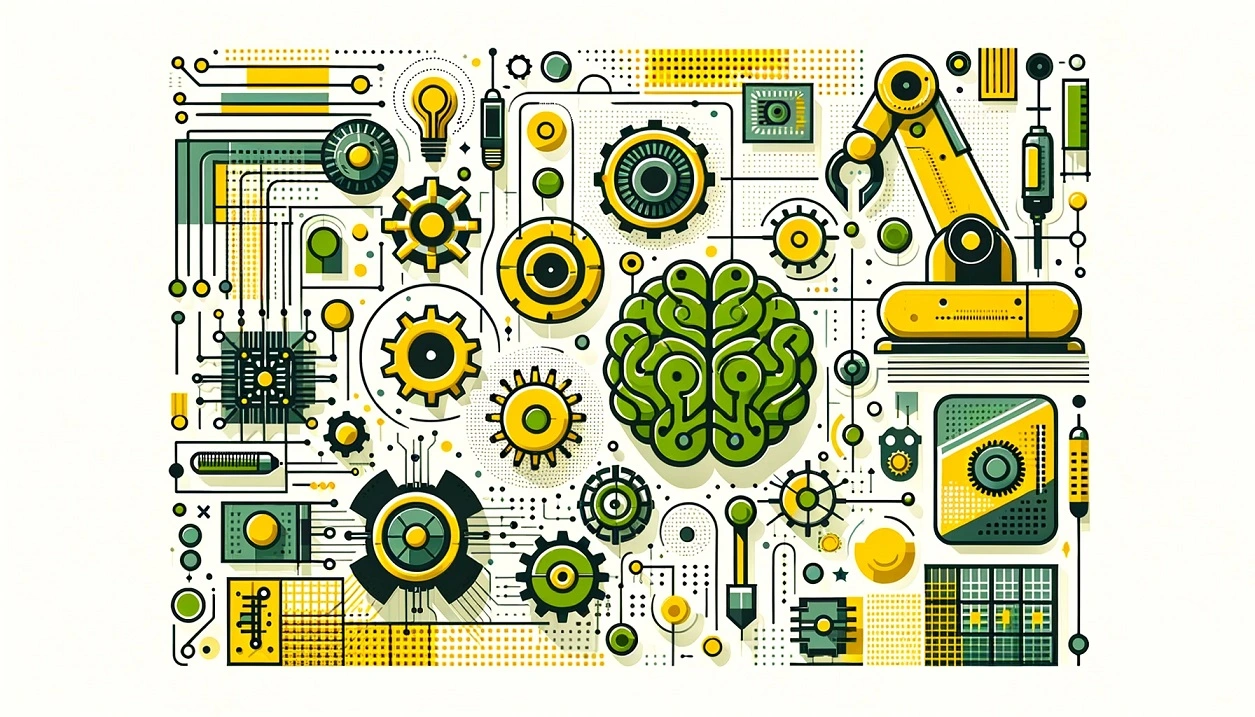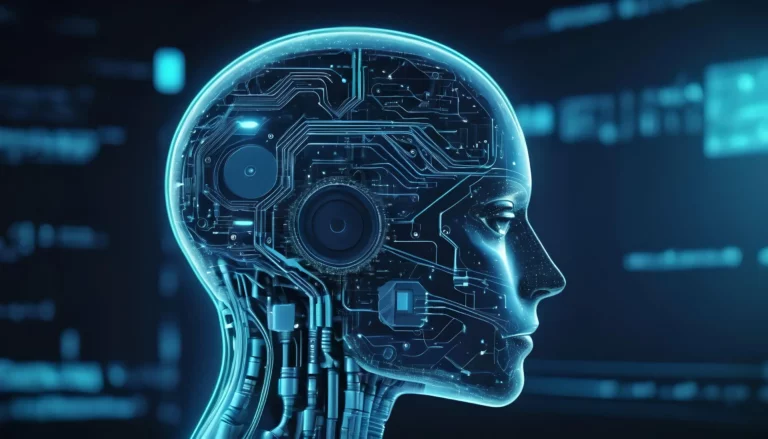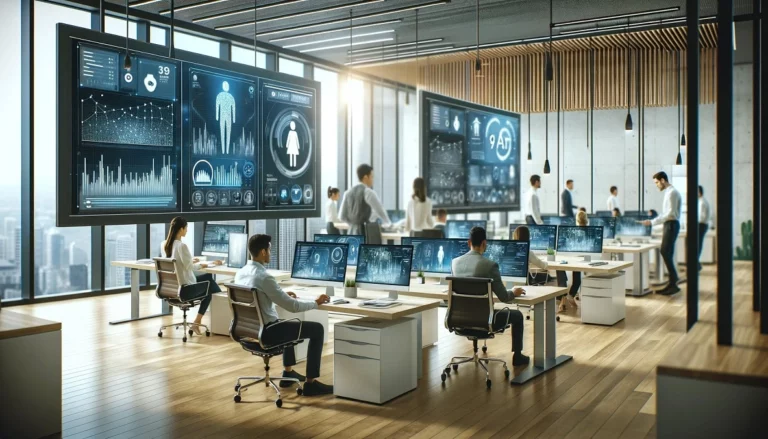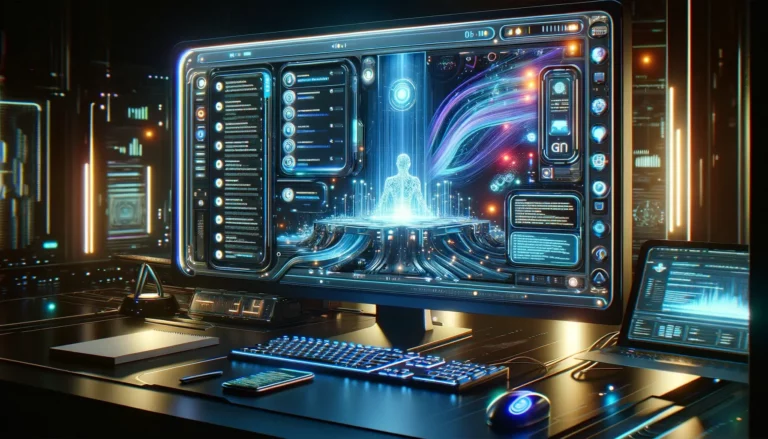Robotics and artificial intelligence were once considered distinct. But not anymore. Today, these are converging to forge pathways for groundbreaking innovations and revolutionizing industries we once knew. As we stand on the brink of this technological renaissance, it’s essential to grasp the potential and implications of this synergy.
Robotics, traditionally focused on creating machines capable of performing tasks in the physical world, has made remarkable strides. Yet, the integration of AI is catapulting these machines from mere automation to intelligent entities capable of learning, adapting, and making decisions. This amalgamation isn’t an enhancement and a paradigm shift that’s opening doors to new industries and redefining existing ones.
Read also: AI and Nursing: Revolutionizing Patient Care
Understanding Robotics and AI
Robotics and artificial intelligence (AI) are two technological domains that have captivated human imagination for decades. Robotics, fundamentally, refers to the design, construction, and operation of machines (robots) capable of performing tasks that either mimic human actions or operate autonomously in environments unsuitable or dangerous for humans. Historically, robotics has been pivotal in industries like manufacturing, where robots execute repetitive, high-precision tasks.
On the other hand, AI is a broader field that encompasses the development of computer systems able to perform tasks requiring human intelligence. These include learning, reasoning, problem-solving, perception, and language understanding. Unlike robotics, AI isn’t confined to physical machines; it’s the brain, the intelligence that can be embedded into software or robots.
The distinction between AI and robotics is crucial yet often misunderstood. While all robots aren’t AI-equipped, all AI systems aren’t robots. AI becomes a critical component when robots need to process information, make decisions, or learn from experiences, stepping beyond mere mechanical functions. This integration is where the magic happens, allowing robots to not just perform tasks but adapt and improve over time.
As AI continues to evolve, its integration into robotics is becoming more natural and essential. Machine learning algorithms enable robots to learn from data, make predictions, or recognize patterns, making them more intelligent and versatile. This synergy is reshaping industries, creating smarter, more efficient, and more adaptable robotic systems.
The convergence of robotics and artificial intelligence isn’t just an academic interest. It’s also a practical evolution that’s already underway, changing the way we work, live, and interact with technology.
The Merger of Robotics and Artificial Intelligence
The integration or merger of robotics and artificial intelligence marks a significant leap from traditional robotics to a new era where machines are not just programmable but also intelligent and autonomous. This integration is a natural and compelling fit, considering AI’s ability to endow robots with cognitive functions akin to learning and decision-making.
The progress in this field is driven by the advancements in machine learning, a subset of AI. Machine learning algorithms allow robots to learn from data, adapt to new scenarios, and improve their performance over time. This capability is crucial in environments that are dynamic and unpredictable, where pre-programmed instructions are insufficient.
A prime example of AI in robotics is edge computing. Here, AI algorithms are processed on the robot itself (at the ‘edge’ of the network), reducing the need for constant data transmission to a central server. This approach enhances real-time data processing and decision-making, crucial in applications like autonomous vehicles or drones, where every millisecond counts.
Another area where AI is making a substantial impact is in machine vision, enabling robots to interpret and interact with their surroundings. This technology is instrumental in industries like logistics and manufacturing, where robots equipped with AI-powered vision systems can identify objects, navigate spaces, and perform complex tasks with high accuracy.
The fusion of AI and robotics isn’t just an enhancement. It’s a transformative shift. It’s enabling robots to perform tasks that were previously considered too complex or nuanced, such as delicate surgical procedures or intricate assembly tasks. This integration is not just about making robots smarter; it’s about making them more adaptable, efficient, and capable of tackling challenges that were once the sole domain of humans.
The potential of AI in robotics is vast and still largely untapped. As this technology continues to evolve, it promises to revolutionize how we approach problems and tasks in various sectors, making the impossible possible.
Real-World Applications of AI in Robotics
The integration of Artificial Intelligence (AI) in robotics is not just a theoretical advancement but a practical revolution, evident in various sectors. AI’s ability to process and analyze vast amounts of data, learn from experiences, and make autonomous decisions, has significantly enhanced the capabilities of robots. Let’s explore how this synergy is transforming industries:
1. Customer Service with AI Chatbots: In the realm of customer service, AI-powered chatbots are revolutionizing interactions. These chatbots, equipped with natural language processing, can understand and respond to customer queries in real-time, offering a personalized and efficient service experience. This application is particularly beneficial in healthcare, where chatbots can assist in patient triage or provide health-related information, easing the workload of nurses and healthcare professionals.
2. Manufacturing – Assembly and Packaging: The manufacturing sector has witnessed a substantial transformation with AI-driven robots. These robots can adapt to varied tasks, from intricate assembly to precise packaging, with greater efficiency and fewer errors. The use of AI in robotics has not only streamlined operations but also enhanced the safety of the workplace, taking over tasks that are hazardous for humans.
3. Logistics – Imaging and Recognition: In logistics, AI-enabled robots are revolutionizing inventory management and shipping processes. Equipped with advanced imaging and recognition capabilities, these robots can sort, track, and manage inventory with unprecedented accuracy and speed. This application is crucial in today’s fast-paced e-commerce environment, where efficient logistics are key to customer satisfaction.
The real-world applications of AI in robotics are making operations smarter, faster, and more adaptable across various sectors. This integration enhances efficiency, accuracy, and adaptability, proving indispensable in today’s technology-driven world. As AI continues to evolve, its applications in robotics will only expand, offering endless possibilities for innovation and improvement.
The Role of a Robotics Engineer
In the dynamic field of robotics, particularly with the increasing integration of artificial intelligence (AI), the role of a robotics engineer has become more crucial and multifaceted. Robotics engineers are at the forefront of designing, building, and maintaining robots, but their job doesn’t end there. With AI’s growing influence, these professionals are also tasked with implementing intelligent systems that enable robots to perform complex tasks autonomously.
1. Responsibilities of a Robotics Engineer: A robotics engineer’s responsibilities extend beyond mere construction of robotic systems. They are involved in the entire lifecycle of a robot, from conceptualization and design to programming and testing. This process includes integrating AI algorithms, ensuring that the robot can learn, adapt, and operate efficiently in diverse environments. Robotics engineers need to be adept in various domains, including mechanical engineering, electrical engineering, computer science, and, increasingly, machine learning and AI.
2. Skills Required for a Robotics Engineer: To thrive in this evolving field, a robotics engineer must possess a blend of technical and soft skills. Proficiency in programming languages like Python and C++, knowledge of machine learning frameworks, and experience with sensor integration and data analysis are essential. Equally important are creativity, problem-solving abilities, and continuous learning. The fast-paced nature of robotics and artificial intelligence demands engineers to stay abreast of the latest technological advancements and methodologies.
3. The Importance of Continuous Learning and Problem-Solving: The field of AI and robotics is ever-evolving. New technologies, algorithms, and applications emerge regularly, making continuous learning an integral part of a robotics engineer’s career. Problem-solving is also a critical skill, as engineers often face unique challenges in integrating AI into robotics, requiring innovative solutions.
Robotics engineers play a pivotal role in shaping the future of AI and robotics. Their expertise and creativity drive the advancements in this field, making them indispensable in transforming ideas into tangible, intelligent robotic systems. As AI continues to evolve, the role of robotics engineers will only grow in significance, offering endless opportunities for those passionate about this exciting and dynamic field.
The Future of AI and Robotics
As we delve into the future of robotics and artificial intelligence, we stand at the cusp of what could be the most transformative era in human history. This fusion of AI and robotics is not just about technological advancement; it’s about redefining possibilities and transcending boundaries.
1. Artificial General Intelligence (AGI): A pivotal concept in the future of AI is Artificial General Intelligence (AGI), where machines would possess the ability to understand, learn, and apply intelligence as broadly as a human. AGI represents a future where AI can perform any intellectual task that a human being can, leading to innovations we can scarcely imagine. While AGI is still a theoretical concept, its potential impact on robotics and various industries is profound.
2. Advancing Various Industries: The implications of AI and robotics extend far beyond their current applications. In healthcare, for instance, AI-driven robots could perform complex surgeries with precision surpassing human capabilities. In space exploration, intelligent robots could explore distant planets, sending back invaluable data and perhaps even preparing habitats for human arrival. These advancements could revolutionize not just how tasks are performed but also lead to the creation of entirely new industries.
The future of AI and robotics is teeming with opportunities for innovation and growth. It promises a world where intelligent robots not only assist in everyday tasks but also tackle challenges in areas like environmental conservation, disaster response, and global healthcare. This future isn’t just about machines taking over tasks; it’s about them enhancing human capabilities and opening up new horizons for exploration and discovery.
See also: How Blockchain and AI are Reshaping Industries
Conclusion
The journey through the realms of robotics and Artificial Intelligence (AI) reveals a future brimming with potential and unprecedented opportunities. The integration of AI in robotics is transforming how we interact with technology, making it more intelligent, adaptable, and efficient. From enhancing customer service to revolutionizing manufacturing and logistics, the applications are as diverse as they are impactful.
As we look ahead, the roles of AI and robotics in advancing industries like healthcare and space exploration are undeniable. The prospect of Artificial General Intelligence (AGI) further amplifies the potential for groundbreaking advancements. This fusion of technology is not just an evolution; it’s a revolution that is reshaping our world.
For AI and tech enthusiasts, nurses, healthcare professionals, and bloggers, understanding and embracing these changes is crucial. The future of robotics and artificial intelligence offers a canvas for innovation, problem-solving, and creativity. It’s an exciting time to be part of this transformative journey, where the possibilities are as limitless as our imagination.







